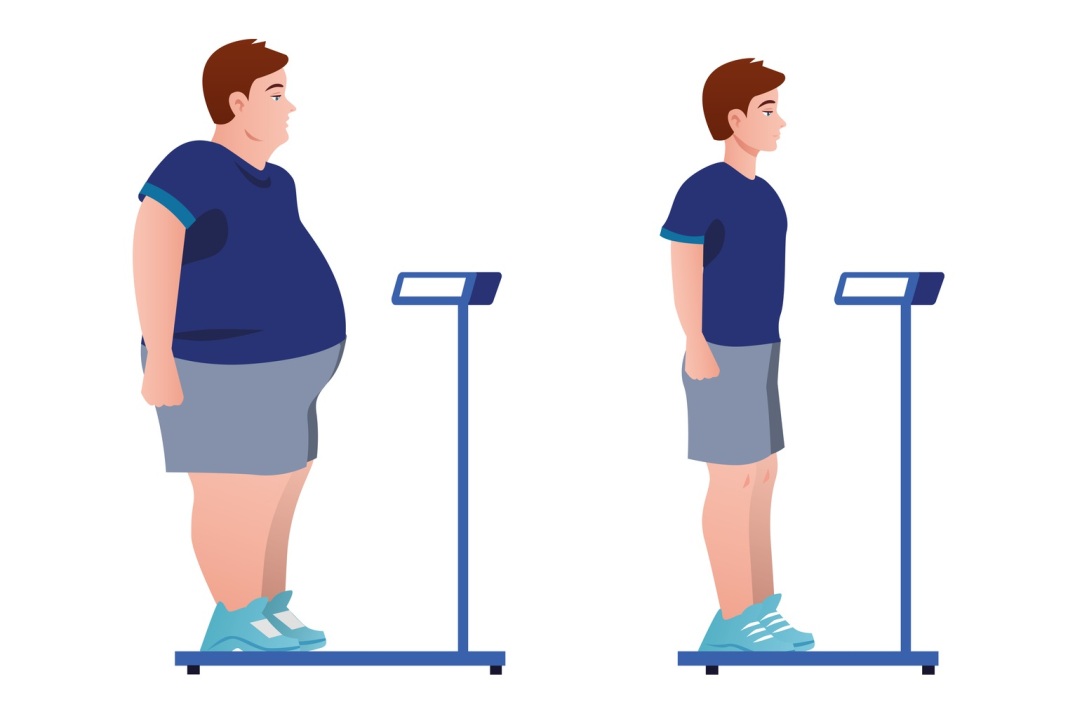Slim vs Fat: Overweight Russians Earn Less

Overweight Russians tend to earn significantly less than their slimmer counterparts, with a 10% increase in body mass index (BMI) associated with a 9% decrease in wages. These are the findings made by Anastasiia Deeva, lecturer at the HSE Faculty of Economic Sciences and intern researcher in Laboratory of Economic Research in Public Sector. The article has been published in Voprosy Statistiki.
In recent decades, the rising number of overweight individuals has become a serious public health concern. The World Health Organisation and governments around the world have voiced alarm over the increasing mortality rates and prevalence of chronic health conditions linked to this issue. Additionally, being overweight can negatively impact a person’s standing in the job market. Numerous studies indicate that in many countries, overweight individuals often face discrimination during the hiring process as well as in opportunities for career advancement. In the United States, a one-point increase in BMI is associated with a 3% to 6% reduction in income, while in Taiwan, the decrease can be as high as 7%. In Russia, overweight is also a pressing issue. Over the past five years, the proportion of overweight adults has risen to 62.5%. However, there have been no comprehensive studies examining the impact of being overweight on the wages of Russian employees.
Anastasiia Deeva, a visiting lecturer and doctoral student at the HSE Faculty of Economic Sciences, analysed data from the Russian Longitudinal Monitoring Survey conducted by HSE University (RLMS-HSE) for the period 2013 to 2022. This population-based survey enables researchers to track changes in the socioeconomic and demographic characteristics of the same individuals over time. The final sample of Deeva's study included data from 17,000 respondents. The average age of participants was 41, the average monthly salary was approximately 37,000 roubles, and the average BMI was 26.22—classified as slightly overweight.

Anastasiia Deeva
Body mass index has its limitations—for example, individuals with high muscle mass may be classified as overweight according to BMI. 'The BMI of a well-built athletic person may incorrectly suggest excess weight, but only if they have a very high muscle mass. However, this is much less common than actual overweight. Therefore, on average, BMI remains a useful measure for identifying the effects of being overweight,' Deeva comments.
BMI and wages can be subject to reverse causality: on one hand, overweight employees may face discrimination and earn less; on the other, employees with higher wages may be healthier and slimmer due to better nutrition and more frequent exercise. Deeva used a customised model that accounts for these caveats, enabling a more accurate assessment of BMI’s impact on wages.
The analysis revealed that in Russia, each one-point increase in BMI is associated with an average 4% decrease in monthly wages. This means that individuals with a normal BMI of up to 24 and those with a BMI of 34, classified as class I obesity, can have a wage difference of approximately 40%.
For a more convenient interpretation, the author constructed a second model that used the logarithms of BMI and wages in order to estimate the relative change in the indicators. She found that a 10% increase in BMI corresponds to an approximate 9% decrease in wages.

Additionally, the relationship between BMI and wages was found to be non-linear. An initial increase in BMI leads to a sharp decline in wages, but after reaching a certain threshold, the relationship weakens and wages decline more gradually.
This suggests a pattern of bodyweight-based discrimination in the Russian job market, where overweight individuals face fewer opportunities for high-paying positions, which in turn negatively affects their families’ well-being.
'It is important to recognise that discrimination against overweight employees is not truly about their appearance but rather stems from social stereotypes and misconceptions surrounding obesity. In modern society, it is commonly assumed that an overweight person is more likely to be lazy and unmotivated, which sends a signal to employers that such an employee may underperform. I believe this is the main reason behind lower earnings,' Deeva argues. 'However, every individual is unique, and appearance has no bearing on workplace performance. Therefore, relying on a one-size-fits-all, BMI-based approach to hiring is misguided.'
See also:
Scientists Test Asymmetry Between Matter and Antimatter
An international team, including scientists from HSE University, has collected and analysed data from dozens of experiments on charm mixing—the process in which an unstable charm meson oscillates between its particle and antiparticle states. These oscillations were observed only four times per thousand decays, fully consistent with the predictions of the Standard Model. This indicates that no signs of new physics have yet been detected in these processes, and if unknown particles do exist, they are likely too heavy to be observed with current equipment. The paper has been published in Physical Review D.
HSE Scientists Reveal What Drives Public Trust in Science
Researchers at HSE ISSEK have analysed the level of trust in scientific knowledge in Russian society and the factors shaping attitudes and perceptions. It was found that trust in science depends more on everyday experience, social expectations, and the perceived promises of science than on objective knowledge. The article has been published in Universe of Russia.
Scientists Uncover Why Consumers Are Reluctant to Pay for Sugar-Free Products
Researchers at the HSE Institute for Cognitive Neuroscience have investigated how 'sugar-free' labelling affects consumers’ willingness to pay for such products. It was found that the label has little impact on the products’ appeal due to a trade-off between sweetness and healthiness: on the one hand, the label can deter consumers by implying an inferior taste, while on the other, it signals potential health benefits. The study findings have been published in Frontiers in Nutrition.
HSE Psycholinguists Launch Digital Tool to Spot Dyslexia in Children
Specialists from HSE University's Centre for Language and Brain have introduced LexiMetr, a new digital tool for diagnosing dyslexia in primary school students. This is the first standardised application in Russia that enables fast and reliable assessment of children’s reading skills to identify dyslexia or the risk of developing it. The application is available on the RuStore platform and runs on Android tablets.
Physicists Propose New Mechanism to Enhance Superconductivity with 'Quantum Glue'
A team of researchers, including scientists from HSE MIEM, has demonstrated that defects in a material can enhance, rather than hinder, superconductivity. This occurs through interaction between defective and cleaner regions, which creates a 'quantum glue'—a uniform component that binds distinct superconducting regions into a single network. Calculations confirm that this mechanism could aid in developing superconductors that operate at higher temperatures. The study has been published in Communications Physics.
Neural Network Trained to Predict Crises in Russian Stock Market
Economists from HSE University have developed a neural network model that can predict the onset of a short-term stock market crisis with over 83% accuracy, one day in advance. The model performs well even on complex, imbalanced data and incorporates not only economic indicators but also investor sentiment. The paper by Tamara Teplova, Maksim Fayzulin, and Aleksei Kurkin from the Centre for Financial Research and Data Analytics at the HSE Faculty of Economic Sciences has been published in Socio-Economic Planning Sciences.
Larger Groups of Students Use AI More Effectively in Learning
Researchers at the Institute of Education and the Faculty of Economic Sciences at HSE University have studied what factors determine the success of student group projects when they are completed with the help of artificial intelligence (AI). Their findings suggest that, in addition to the knowledge level of the team members, the size of the group also plays a significant role—the larger it is, the more efficient the process becomes. The study was published in Innovations in Education and Teaching International.
New Models for Studying Diseases: From Petri Dishes to Organs-on-a-Chip
Biologists from HSE University, in collaboration with researchers from the Kulakov National Medical Research Centre for Obstetrics, Gynecology, and Perinatology, have used advanced microfluidic technologies to study preeclampsia—one of the most dangerous pregnancy complications, posing serious risks to the life and health of both mother and child. In a paper published in BioChip Journal, the researchers review modern cellular models—including advanced placenta-on-a-chip technologies—that offer deeper insights into the mechanisms of the disorder and support the development of effective treatments.
Using Two Cryptocurrencies Enhances Volatility Forecasting
Researchers from the HSE Faculty of Economic Sciences have found that Bitcoin price volatility can be effectively predicted using Ethereum, the second-most popular cryptocurrency. Incorporating Ethereum into a predictive model reduces the forecast error to 23%, outperforming neural networks and other complex algorithms. The article has been published in Applied Econometrics.
Administrative Staff Are Crucial to University Efficiency—But Only in Teaching-Oriented Institutions
An international team of researchers, including scholars from HSE University, has analysed how the number of non-academic staff affects a university’s performance. The study found that the outcome depends on the institution’s profile: in research universities, the share of administrative and support staff has no effect on efficiency, whereas in teaching-oriented universities, there is a positive correlation. The findings have been published in Applied Economics.


